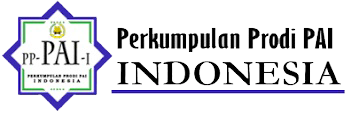Penerapan Media Poster Sebagai Upaya Pencegahan Minuman Keras di Kalangan Remaja
DOI:
https://doi.org/10.19109/pairf.v7i1.26786Keywords:
Poster Media, Technology, PAI LearningAbstract
Poster media is the application of poster media to obtain accurate information related to students' achievements in mastering poster media. The purpose of this study focuses on the analysis of the application of poster media as an effort to prevent liquor among adolescents. This study is a category of descriptive qualitative research, and the data sources in the study include interviews, observations and documentation. Data analysis used in this research is data reduction, data presentation, and conclusion drawing. The results of the analysis of the application of poster media as an effort to prevent liquor among teenagers make attractive poster media and with the placement of images and the right writing so that students can easily read the poster media made by the researcher is quite easy and can be followed by teachers to help the learning process. Furthermore, the challenges and obstacles of poster media as an effort to prevent liquor among teenagers are: In addition, making posters manually is a job that has its own challenges. This includes the issue of cost and quality of the products produced. To improve learning and overcome current challenges more efficiently. Meanwhile, other obstacles include difficulty conveying the message clearly, the budget to print quality posters and no place to specifically attach poster media in schools.References
Djafar, S, dan D Novian. “Implementasi teknologi augmented reality dalam pengembangan media pembelajaran perangkat keras komputer.” Jambura Journal of Informatics 3, no. 1 (2021): 44–57.
Febrinasari, T, dan A. P Riandani. Edukasi Pentingnya Pangan Sehat untuk Anak Usia Dini bagi Orang Tua dan Guru di TK Insani 1. Bekasi: Lentera Pengabdian, 2023.
Hartoyo, A, A Nursangaji, dan D Suratman. “Pengembangan kompetensi sikap dalam pembelajaran matematika secara holistik bersumber Qur’an.” Jurnal Pendidikan Matematika 10, no. 1 (2019): 149–162.
Hermawati, E, dan M. A Lestari. “Pengembangan Monopoli Sebagai Media Pembelajaran Berbasis Permainan Edukasi di Sekolah Dasar.” ournal of Innovation and Sustainable Empowerment 3, no. 2 (2024): 67–71.
Hidayat, N, dan H Khotimah. “Pemanfaatan teknologi digital dalam kegiatan pembelajaran.” Jurnal Pendidikan Dan Pengajaran Guru Sekolah Dasar (JPPGuseda) 2, no. 1 (2019): 10–15.
Kurniasari, R, dan A Wathon. “Pembelajaran Konstruktif Melalui Alat Permainan Edukatif.” Jurnal Sistim Informasi Manajemen 2, no. 2 (2019): 96–112.
“Proses pembelajaran yang efektif.” JISAMAR (Journal of Information System, Applied, Management, Accounting and Research) 3, no. 2 (n.d.): 19–25.
Purnamasari, E. “Prediksi Tingkat Kepuasan Dalam Pembelajaran Daring Menggunakan Algoritma Naive Bayes.” Jurnal Informasi Dan Teknologi 5, no. 4 (2023): 153–159.
Purnamasari, E, dan L Hartati. “Meningkatkan Keuntungan Bisnis Dengan Penggunaan Sistem Aplikasi Kasir Stroberi Bagi Pemula.” JMM (Jurnal Masyarakat Mandiri) 7, no. 2 (2023): 1198–1205.
Purnamasari, E, dan D. A. Verano. “Pemanfaatan Dunia Internet Dalam Metode Pembelajaran Berbasis Digital Bagi Anak Usia Dini Di Era Globalisasi.” Jurnal Masyarakat Mandiri 8, no. 4 (2024).
Sugiyono. Metode penelitian kuantitatif, kualitatif, dan r&d. Bandung: Alfabeta, 2013.
Syarnubi, Syarnubi. “Profesionalisme Guru Pendidikan Agama Islam Dalam Membentuk Religiusitas Siswa Kelas IV Di SDN 2 Pengarayan.” Tadrib: Jurnal Pendidikan Agama Islam 5, no. 1 (2019).
Syarnubi, Syarnubi, dan Ahmad Syarifuddin Sukirman Sukirman. “Curriculum Design for the Islamic Religious Education Study Program in the Era of the Industrial Revolution 4.0.” AL-ISHLAH: Jurnal Pendidikan Islam 15, no. 4 (2023).












.png)


1.png)




